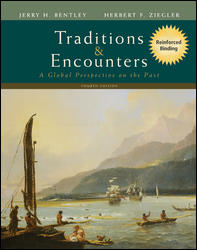1 A) developed by Byzantine craftsmen by improving the cocoons of wild silkworms. B) introduced by two Christian monks to the Byzantine Empire. C) introduced to the Byzantine Empire through several routes. D) taught to the Chinese by Byzantine monks. E) None of the answers are correct. 2 A) Byzantion. B) Constantinople. C) Byzantium. D) Istanbul. E) None of the answers are correct. 3 caesaropapism refers to the fact that the Byzantine emperorsA) claimed divine favor and sanction. B) claimed divine status C) claimed half human and half divine status. D) claimed to be both Roman emperor and pope. E) None of the answers are correct. 4 not true of Theodora?A) She was emperor Justinian's wife, advisor, and aid. B) She was the daughter of a bear keeper in the circus C) She was the dominant political figure of her age, controlling the empire from behind the scenes. D) She was a former stripper. E) She advised him to crush a riot in Constantinople. 5 A) plan to destroy Constantinople in order to rebuild it. B) codification of Roman law, known as Body of the Civil Law . C) complete reconstitution of the classical Roman empire. D) decisive victory over the Muslims. E) All of the answers are correct. 6 theme system,A) Byzantine generals used Greek fire to defend their provinces (themes ). B) free peasants received allotments of land in exchange for military service. C) generals cooperated with governors in civil administration of provinces (themes ). D) landed aristocrats turned peasants into slaves. E) None of the answers are correct. 7 A) Byzantium and the Bulgars. B) Byzantium and European crusaders. C) Byzantium and Muslim Saljuqs. D) Byzantium and Islam. E) None of the answers are correct. 8 not an economic policy of the Byzantine government?A) Preventing land accumulation by wealthy classes in order to protect free peasants. B) Preventing wealthy and powerful entrepreneurs from monopolizing the silk industry. C) Issuing the bezant (Byzantine gold coin) as the standard currency. D) Preventing business partnerships to encourage individual investment. E) Allowing banks to advance loans for business ventures. 9 not a form of entertainment in Constantinople?A) perching atop tall pillars B) athletic matches and contests between wild animals C) circuses featuring clowns, jugglers, and dwarfs D) chariot races E) theaters of song and dance 10 A) He described it as a corrupt and ungodly place. B) He described it as inferior to the city of Baghdad. C) He described it as a place where no one is interested in learning. D) He described it as the place with the greatest entertainment. E) All of the answers are correct. 11 A) considered themselves the direct heirs of classical Greece. B) no longer spoke Latin; they now spoke Greek. C) placed more emphasis on the humanities than the sciences. D) read commentaries on the Greek classics. E) All of the answers are correct. 12 A) he wanted to give the ecclesiastical authorities a lesson by destroying paintings and images of Jesus and the saints. B) he was convinced that the veneration of religious images was sinful, tantamount to the worship of physical idols. C) he suffered from severe mental illness, and the religious images drove him crazy. D) he wanted to destroy the influence of the Roman church. E) All of the answers are correct. 13 A) They grew out of the efforts of devout individuals to lead especially holy lives. B) They provided social services to their communities. C) They were centers of thought and learning D) They opposed the policy of iconoclasm E) some forbade female humans or animals from entering 14 A) rituals such as whether priests should shave their beards. B) the doctrinal dispute about Jesus' relationship to God and the Holy Spirit. C) the worship of icons. D) who had authority over their jurisdiction. E) the appropriateness of the crusades. 15 A) intermarriages between generals' children and local peasants. B) the decline of the free peasantry in both number and prosperity. C) frequent fights between the Greens and the Blues. D) rebellion among the Islamic states. E) All were serious problems. 16 A) They were trying to recapture Jerusalem and other holy sites from Muslim control. B) They carved out states in parts of the Byzantine empire C) They sacked the city of Constantinople. D) They were used to strengthen economic positions in the eastern Mediterranean. E) All of the answers are correct. 17 A) crusaders of Western Europe. B) Muslim Saljuqs. C) Ottoman Turks. D) Russians and Bulgars. E) None of the answers are correct. 18 not a consequence of the Byzantine missions to the Slavic peoples?A) The Cyrillic alphabet became the writing system of the Slavic peoples. B) The Byzantine Empire and Slavic peoples united to fight against the Islamic armies. C) Eastern Orthodox Christianity was adopted by the Slavic peoples. D) Schools were organized by the missionaries. E) All of the answers are correct. 19 A) He had them all executed by being burned on a cross. B) He condemned them to death by crucifixion. C) He had them banished from the empire. D) He forced them to convert to Manichaeism. E) None of the answers are correct. 20 A) Constantinople B) Rome C) Moscow D) Kiev E) St. Petersburg





